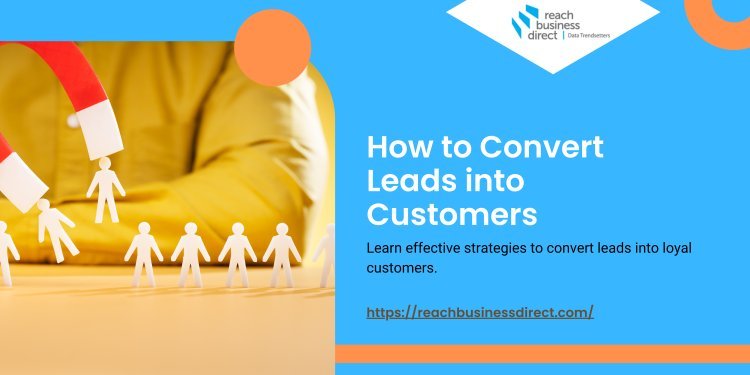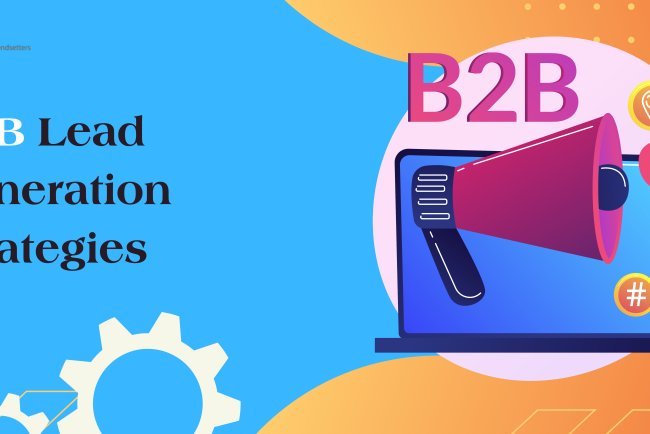How to Convert Leads into Customers: A Comprehensive Guide
Learn effective strategies to convert leads into loyal customers. Discover tips and techniques to boost your conversion rates and grow your business successfully.

In today's competitive market, converting leads into customers is crucial for significant businesses aiming for growth and success. Transforming a potential lead into a loyal customer requires a strategic approach encompassing understanding the customer journey, nurturing relationships, and utilising effective sales techniques. This comprehensive guide will explore proven methods to help you convert leads into customers, ensuring your business thrives.
Your Lead Generation Company in Dubai
Understanding the Customer Journey
To effectively convert leads into customers, it's essential to understand the customer journey. This journey is the process that a potential customer goes through, from the starting awareness of your brand to the final purchase decision. It typically includes the following stages:
1. Awareness: The potential clients become aware of your product or service.
2. Interest: They show interest by engaging with your content or making inquiries.
3. Consideration: They evaluate your offerings against competitors.
4. Decision: They decide to purchase your product or service.
5. Retention: They become repeat customers and advocate for your brand.
Understanding these stages helps you tailor your approach to meet your leads' needs and expectations at each point in their journey.
Building a Strong Value Proposition
A value proposition is a precise statement that explains how your business, product or service solves a problem, delivers specific benefits, and why customers should choose you over competitors. To craft an attractive value proposition, consider the following:
· Identify your target audience: Understand their pain points, needs, and desires.
· Highlight your business selling points (USPs): What makes your product or service stand out?
· Communicate benefits clearly: Explain how your offering adds value to the customer's life or business.
A strong value proposition attracts leads and sets the foundation for converting them into customers.
Nurturing Leads with Effective Communication
Communication is critical to nurturing leads and guiding them through the customer journey. Here are some of the best strategies to ensure effective communication:
· Personalised emails: Send targeted emails based on the lead's interests and behaviour.
· Regular follow-ups: Keep in touch with enquiries through follow-up emails or calls to maintain engagement.
· Educational content: Provide valuable information through blog posts, webinars, and whitepapers to build trust and authority.
By maintaining consistent and meaningful communication, you can nurture leads and forward them closer to making a purchase decision.
Leveraging Social Proof
Social proof is a potent tool for converting leads into customers. It refers to the influence that the actions, reactions and opinions of others have on an individual's decision-making process. Types of social proof include:
· Customer testimonials: Share positive feedback or testimonials from satisfied customers.
· Case studies: Showcase success stories that highlight the benefits of your product or service.
· Reviews and ratings: Encourage clients to review on platforms like Google, Yelp, or Trustpilot.
Showing social proof on your website, social media, and marketing materials can build confidence, trust, and credibility, attracting leads who will become your loyal customers.
Implementing a Lead Scoring System
Lead scoring is the latest method of ranking leads, which depends on their potential to become customers. You can prioritise efforts on high-quality leads by assigning marks to leads based on their behaviour, engagement, and demographics. Factors to consider in lead scoring include:
· Behavioural data: Website visits, content downloads, email opens, and clicks.
· Engagement level: Frequency and type of interactions with your brand.
· Demographic information: Job title, industry, company size, etc.
Implementing a lead scoring system helps you to focus your resources on leads with the highest likelihood of conversion, improving efficiency and effectiveness.
Offering Incentives and Discounts
Everyone loves a good deal, and incentives and discounts can convert leads into customers. Consider offering:
· Limited-time discounts: Create urgency and encourage immediate action.
· Free trials or samples: Allow leads a risk-free experience with your product or service.
· Exclusive offers: Provide special deals for new customers or newsletter subscribers.
Incentives and discounts can lower the barrier to purchase and give leads the extra push they need to become customers.
Providing Excellent Customer Support
Customer support plays a tremendous real-time role in the conversion process. Leads are more likely to convert when they feel supported and valued. Ensure you provide:
· Responsive support: immediate contact and helpful responses to inquiries and issues.
· Multichannel support: Availability through phone, email, live chat, and social media.
· Knowledgeable staff: Well-trained support teams that can address questions and concerns effectively.
Excellent customer support enhances the overall experience, builds trust, and increases the likelihood of conversion.
Utilising CRM Systems
Customer Relationship Management (CRM) systems are great for managing leads and customer interactions. A CRM system can help you:
· Track and analyse leads: Monitor lead activity and engagement to identify conversion opportunities.
· Automate follow-ups: Schedule and send personalised follow-up emails and messages.
· Segment leads Categorise leads based on behaviour, demographics, and stage in the customer journey.
Using a CRM system, you can streamline your lead management process and ensure no potential customer is overlooked.
Creating Compelling CTAs
Calls to Action (CTAs) encourage leads to take specific actions, such as signing up for a newsletter, weekly update, downloading a guide, or purchasing. To create compelling CTAs:
· Use action-oriented language: Words like "Download," "Get," "Start," or "Join" can motivate leads to act.
· Highlight benefits: Clearly explain what the lead will gain by taking action.
· Make them visually appealing: Grab attention using contrasting colours, bold fonts, and strategic placement.
Practical CTAs guide leads through the conversion funnel and encourage them to take the next step.
Measuring and Analysing Performance
Finally, measuring and analysing your conversion efforts is essential to identify what's working and where improvements are needed. Key metrics to track include:
· Conversion rate: The percentage of leads converted as customers.
· Lead-to-customer ratio: The number of leads required to generate a single customer.
· Customer acquisition cost (CAC): The total cost of acquiring a new customer.
Gather data and gain insights using tools like Google Analytics, CRM reports, and marketing software. Regularly reviewing performance lets you refine your strategies and optimise your conversion process.

Conclusion
Converting leads into customers is a lengthy process that requires an in-depth understanding of the customer journey, effective communication, and strategic use of tools and techniques. By building a strong value proposition, nurturing leads, leveraging social proof, and utilising CRM systems, you can enhance your conversion rates and grow your business. Remember to measure your performance and continuously improve your strategies to stay leading in the competitive market. With dedication and the right approach, you can transform leads into loyal customers, driving sustained business success.
If You are Looking Lead Generation Company in Saudi Arabia call: +971 50 9800 231








